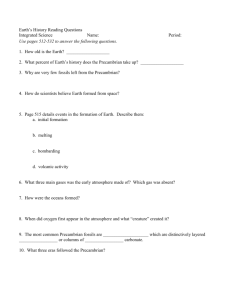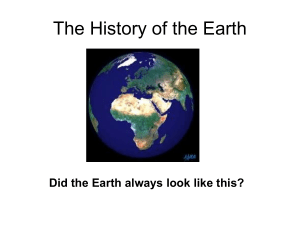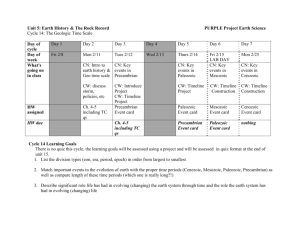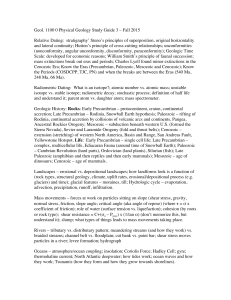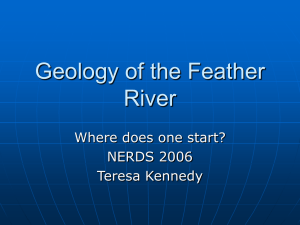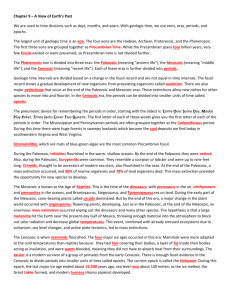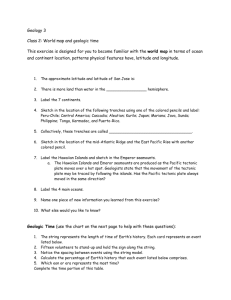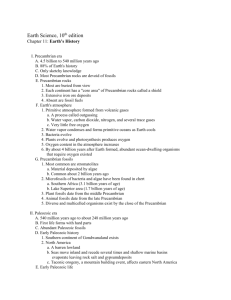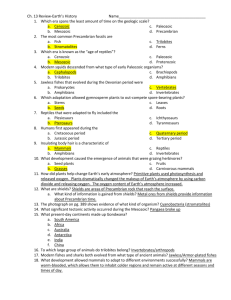Chapter 13.1 Reading Questions
advertisement
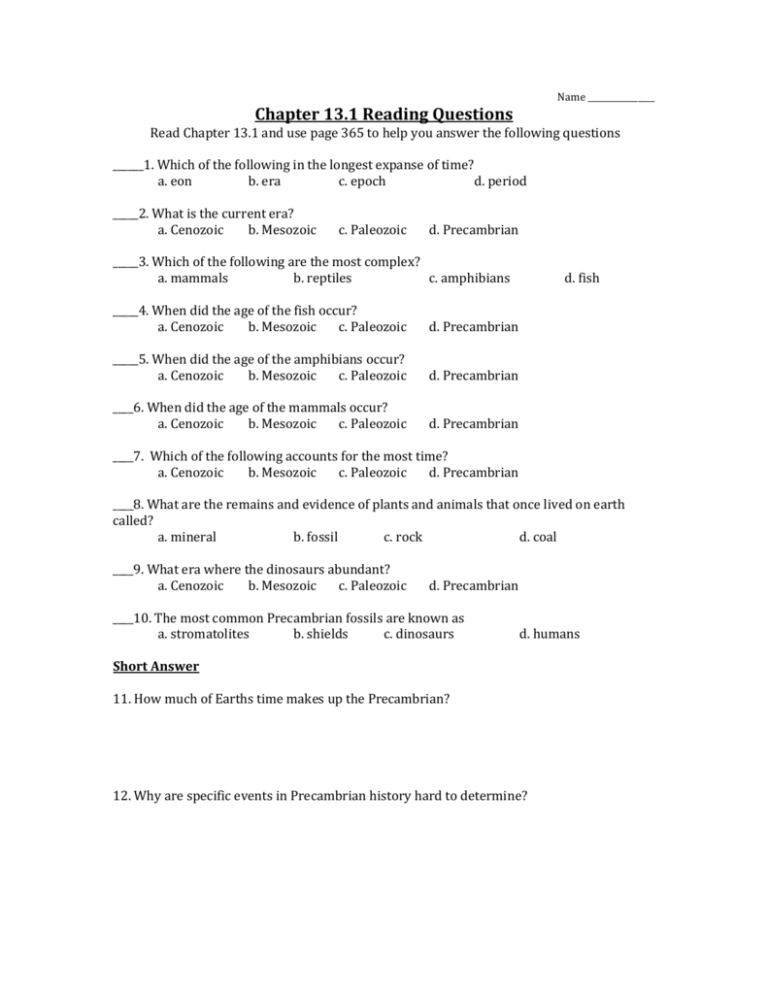
Name ________________ Chapter 13.1 Reading Questions Read Chapter 13.1 and use page 365 to help you answer the following questions ______1. Which of the following in the longest expanse of time? a. eon b. era c. epoch d. period _____2. What is the current era? a. Cenozoic b. Mesozoic c. Paleozoic d. Precambrian _____3. Which of the following are the most complex? a. mammals b. reptiles c. amphibians _____4. When did the age of the fish occur? a. Cenozoic b. Mesozoic c. Paleozoic d. Precambrian _____5. When did the age of the amphibians occur? a. Cenozoic b. Mesozoic c. Paleozoic d. Precambrian ____6. When did the age of the mammals occur? a. Cenozoic b. Mesozoic c. Paleozoic d. Precambrian d. fish ____7. Which of the following accounts for the most time? a. Cenozoic b. Mesozoic c. Paleozoic d. Precambrian ____8. What are the remains and evidence of plants and animals that once lived on earth called? a. mineral b. fossil c. rock d. coal ____9. What era where the dinosaurs abundant? a. Cenozoic b. Mesozoic c. Paleozoic d. Precambrian ____10. The most common Precambrian fossils are known as a. stromatolites b. shields c. dinosaurs d. humans Short Answer 11. How much of Earths time makes up the Precambrian? 12. Why are specific events in Precambrian history hard to determine? 13. How did earth’s oceans form? 14. When did oxygen begin to accumulate in Earths Atmosphere? 15. What percentage of earth’s time did not contain oxygen? (hint use your answer to 14 and the age of earth to figure this one out) 16. Create a flow chart that shows the steps from the formation of earth’s early atmosphere to today’s atmosphere. I’ve started the first event for you -Earths outer shell melts >
